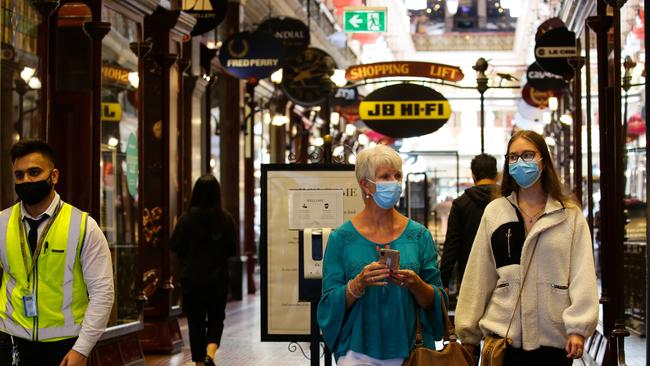Retail recovery extends into new year
Australia’s COVID-19 boom in retail trade continued as turnover lifted in January, despite a lockdown hitting Queensland spending.

Australia’s COVID-19 boom in retail trade extended into the New Year, as turnover lifted in January despite Brisbane’s brief lockdown triggering a drop in spending in the state.
Retail spending climbed 0.6 per cent to $30.5bn, after dropping by 4.1 per cent in December, preliminary figures from the Australian Bureau of Statistics showed.
Turnover remains well above pre-pandemic levels, with year-on-year growth rising to 10.7 per cent, from 9.6 per cent in the prior month. Australians spent around $3bn more in January than they did 12 months earlier.
The retail data adds to evidence of a continuing recovery from the deepest downturn since the Great Depression, after labour force statistics on Thursday revealed the unemployment rate dropped to 6.4 per cent in January, from 6.6 per cent.
The ABS said the three-day lockdown in Queensland drove a 1.5 per cent drop in turnover in the Sunshine State. In contrast, the easing of Sydney’s localised lockdowns in early January helped spur a one per cent lift in retail trade in NSW, as Sydneysiders enjoyed new-found freedom.
ABS director of quarterly economy wide surveys Ben James said the waxing and waning of restrictions in response to virus outbreaks continued to lead to “variations in retail sales between states and territories”.
By industry, food retailing recorded the strongest gains, up 1.8 per cent in January after dropping by 1.7 per cent in the prior month.
Once again, government restrictions played a part. “Victoria and NSW led the rises in supermarkets, after restrictions impacted Christmas celebrations in December 2020,” the ABS said.
The three-day lockdown sank spending in other categories, the ABS said, with turnover in clothing and footwear, household goods, and department stores.
With consumer confidence at around 10-year highs and house prices rising, policymakers are betting that households will draw on tens of billions in savings accumulated through the pandemic to replace any lost income following the end of JobKeeper and the JobSeeker COVID-19 supplement at the end of March.
Reserve Bank governor Philip Lowe and Treasury secretary Steven Kennedy have recently backed this view.




To join the conversation, please log in. Don't have an account? Register
Join the conversation, you are commenting as Logout